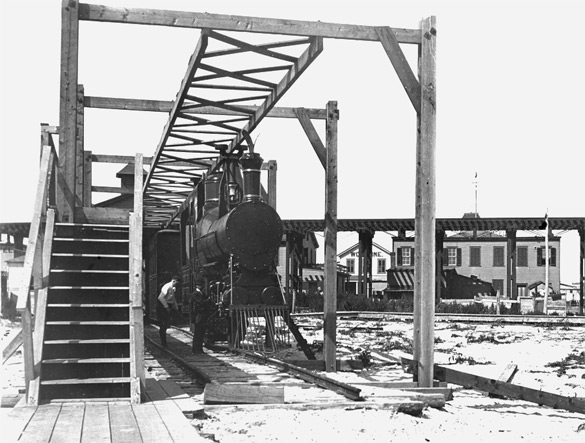A Brief History Of The Subway System: Part 6 Of 6

THE COMMUTE: So far we discussed the railroads and elevated lines that preceded and later became part of the subway system, the original three subway divisions – IRT, BMT and IND, the last two being merged with the opening of the Chrystie Street connection in 1967 – the Dual Contracts, the decline of the elevated system as a separate transportation mode, the rise, decline and renaissance of the subways, and, finally, a little about subway comfort and subway nomenclature and how florescent lighting brightened the system.
In this final part we ask some crucial questions relating to the future of the subway system, mention subjects we did not discuss, and provide sources for additional information.
A Look Toward the Future and Unanswered Questions
Adequate financing of MTA Capital Programs is crucial to which programs are completed and which will be left unfinished. How to best provide this financing is its own subject. Another question is how the MTA should move forward with its plan for its proposed conversion to automatic train operation, a move opposed by the unions, as is any reduced presence of the human element in the system.
Will the Second Avenue system ever be completed or extended to Brooklyn? Will any of the proposed Brooklyn subway extensions of generations ago, such as the Nostrand and Utica Avenue extensions, ever become reality? Will unused and underused rights-of-way become part of the mass transit system again? How high should the fare go? Should it be changed to more of a time-based system, as I hinted last month, and will Albany help or hinder the MTA with financing? Should the MTA continue to remain in charge of the subways or should control be returned to New York City? Space and time do not permit us to delve into any of these subjects at this time.
Conclusion
So there you have it, a very brief history of the NYC subway system. Many subjects were omitted, such as the operation of a subway car (which is nothing like driving an automobile or bus), discussions of the various rolling stock in use at various times, experimental BMT cars, including the Green Hornet and the Bluebird (and you thought there were only the redbirds), abandoned stations, how the trains get their power and what a substation is, the block signal system versus computer-based train control, different map formats used over the years and which is best (e.g. the Vignelli map controversy), a discussion of subway station mosaics, and legal technicalities such as the City of New York’s leasing of its system to the MTA for $1 per year for them to operate.
All omitted information is readily available on the internet, in libraries or by a visit to the New York Transit Museum, housed in an abandoned subway station in Downtown Brooklyn, and in use only for a few years and where many movies and television episodes were filmed.
I hope you found this series interesting and informative and that I have answered some of your questions. This series was in response to reader suggestions. You may think the term I used “very brief” as a joke, but I was serious. A complete discussion of the NYC subway system could take hundreds of pages, as you will see if you check out NYCSubway.org, and some questions would still be unanswered.
Additional subway-related topics such as the Boynton Bicycle Railroad, moving the Brighton Beach Hotel, and the Malbone Street disaster on the Brighton line, where at least 93 people perished, are also easy to find online.
You also can learn, with a little searching, about the urban legend of the 76th Street Station and decide for yourself whether it exists or not, learn trivia like the only subway car grade crossing with automobiles was located at East 105th Street on the Canarsie line, or where the highest elevated station or the deepest subway station is located.
The following sites will provide you with much information depending on your level of interest:
- NYCSubway.org is a wealth of well-organized easy to find information.
- Subchat.com is where you can ask and receive answers to questions. The 76th Street Station is a favorite topic of discussion there.
- arrts-arrchives.com is an extensive site about the portions of the subways that were originally railroads, as well as the entire Long Island Railroad history and includes many photographs, maps and memorabilia.
Also don’t forget about Wikipedia and check out the following sites:
- SecondAvenueSagas.com – a daily blog of current events
- TheJoeKorner.com – additional memorabilia, facts and trivia tests
- Subway.com.ru/maps.htm – old subway map covers
- bmt-lines.com – facts just about the BMT, a very progressive and innovative company
- oldnyc.com – explores old railroad rights of way with pictures of the underused Bay Ridge Line
- Straphangers.org – maintained by the Straphanger’s Campaign, a leading consumer watchdog group
- Mta.info – the official MTA website. (Click on MTA Home if checking on the weekend.)
If you only remember one thing from this series, let it be that when people speak about the “NYC subway system,” they really are talking about a lot more than just the underground “subway to all trains.”
The Commute is a weekly feature highlighting news and information about the city’s mass transit system and transportation infrastructure. It is written by Allan Rosen, a Manhattan Beach resident and former Director of MTA/NYC Transit Bus Planning (1981).
Disclaimer: The above is an opinion column and may not represent the thoughts or position of Sheepshead Bites. Based upon their expertise in their respective fields, our columnists are responsible for fact-checking their own work, and their submissions are edited only for length, grammar and clarity. If you would like to submit an opinion piece or become a regularly featured contributor, please e-mail nberke [at] sheepsheadbites [dot] com.